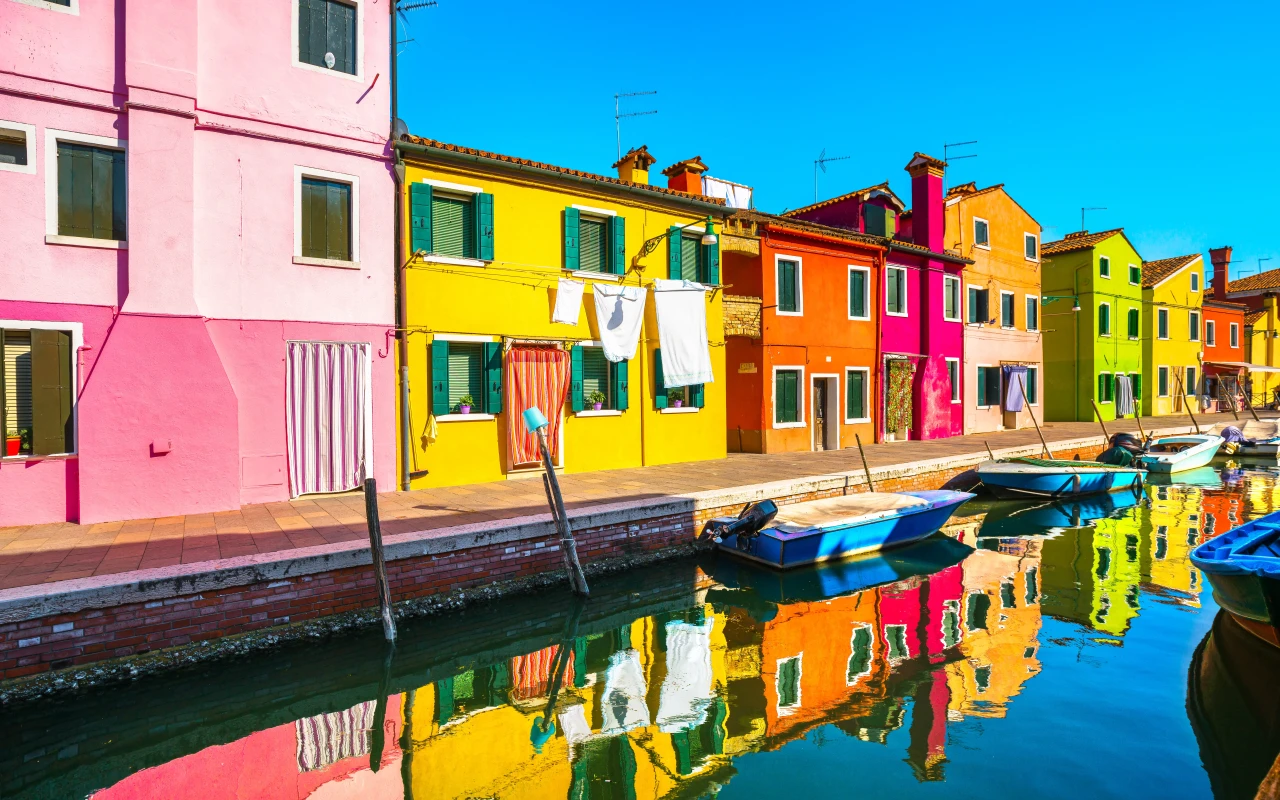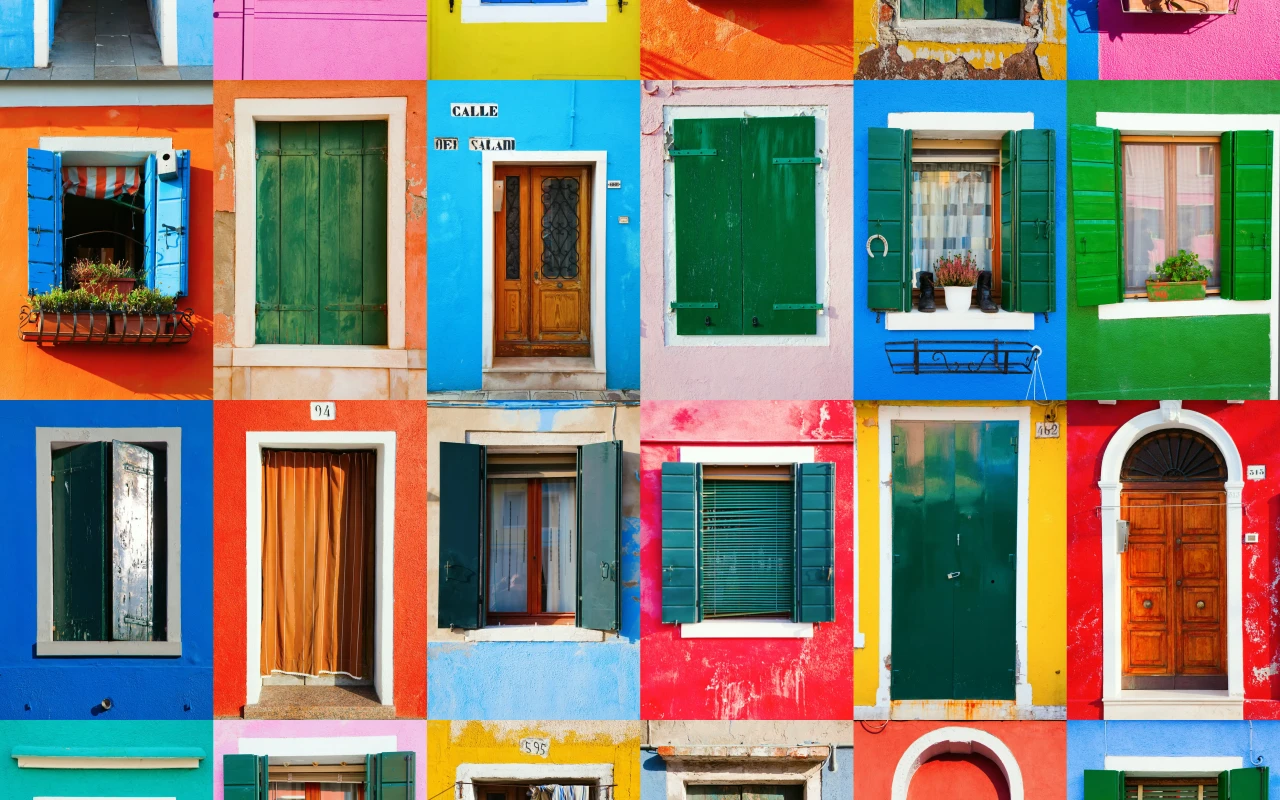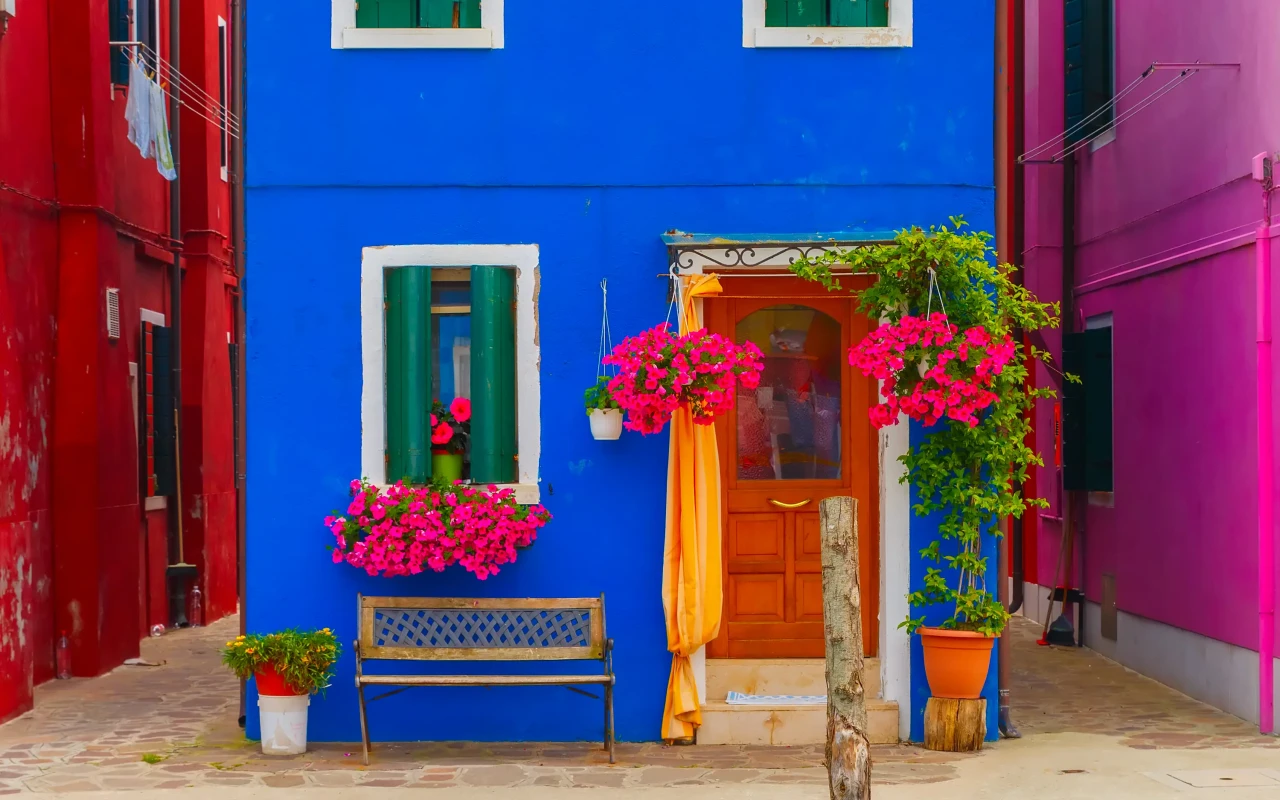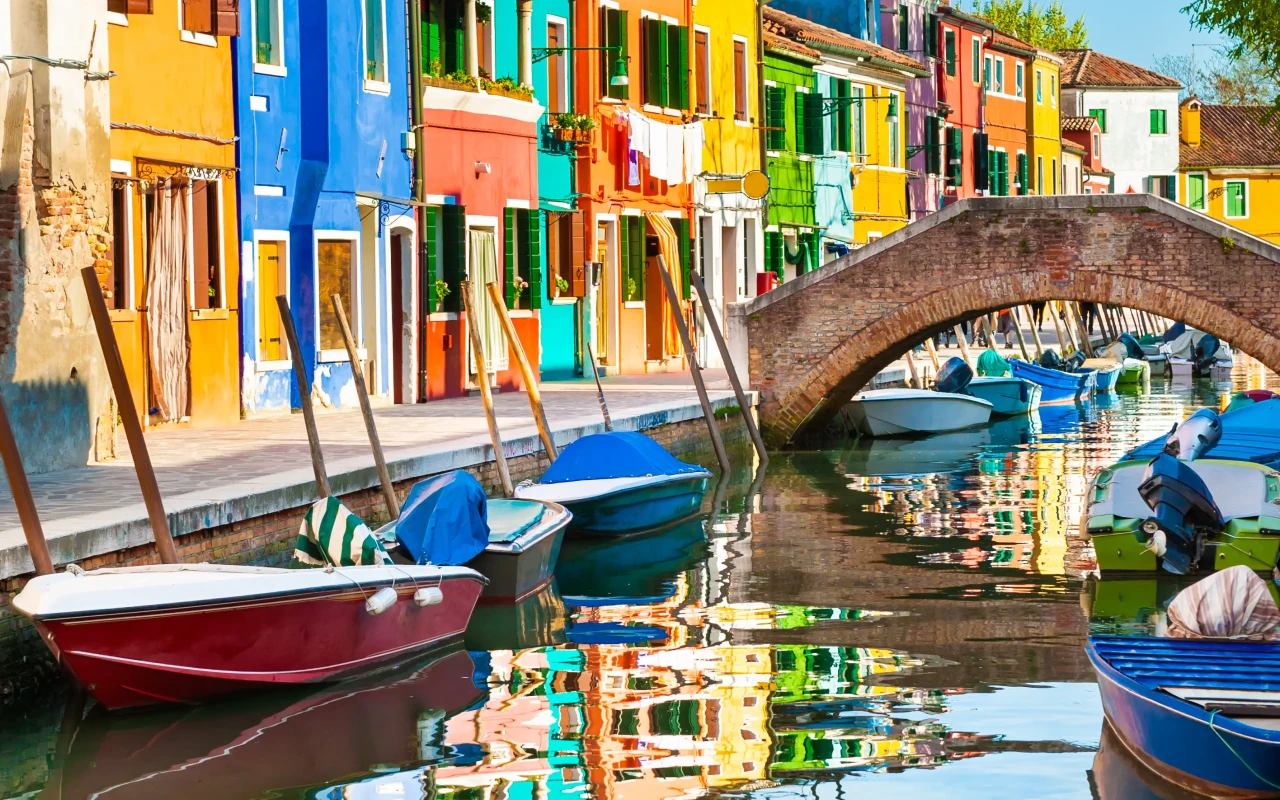Claim to Fame
Burano is world-famous for its vibrantly painted houses and centuries-old tradition of handmade lace-making.
📌 Navigating Burano island : Answers to Frequently Asked Questions
- Admission Fee: There is no admission fee to visit Burano, but individual attractions or tours may have their own costs.
- How Long to Visit: Visitors typically spend several hours on Burano, exploring its lanes, shops, and enjoying the waterfront views and local dining.
- Washrooms: Public washroom facilities are limited on the island, so it's advisable to use facilities at restaurants or cafes when available.
- Hours of Operation: Burano is accessible throughout the day, but it's best to visit during daylight hours to fully appreciate the island's colors and charm.
- Important Information: Burano Island, with its distinctive colorful houses and lace-making heritage, offers a unique and picturesque experience distinct from the bustle of Venice's main islands.
- Handicap Accessible: Burano's flat and walkable layout makes it accessible for visitors with mobility impairments, though some water buses and boat docks may present challenges.
- Pets: Pets are allowed on the island, but should be kept on a leash. Pet policies on water buses should be checked in advance.
- Guided Tours: Guided tours are available, offering insights into Burano's history, culture, and lace-making tradition, though exploring independently is also popular.
- Restaurant or Cafe: Dining options on Burano include seafood restaurants, casual eateries, and cafes, reflecting the island's culinary tradition and local ingredients.
- Gift Shop: Shops on Burano offer local lace products, artwork, and souvenirs, reflecting the island's artisanal traditions and colorful aesthetic.
- Parking: Parking is not available on Burano Island as it is accessible only by water transport. Visitors typically use vaporettos from Venice or other islands.
- Family Friendly: Burano is family-friendly, with its colorful houses, small squares, and welcoming atmosphere appealing to all ages. The island's open spaces are ideal for children.
- Photography: Photography is highly encouraged on Burano, known for its vibrant architecture and picturesque canals. However, respect for residents' privacy is important.
- WIFI: Public WIFI is not widely available on Burano, but some cafes and restaurants may offer it to their customers.
- Picnic Area: No designated picnic areas are available on Burano, but the island's welcoming public spaces allow for casual snacking while exploring.
Photos of Burano island
A rainbow-hued escape from Venice’s main islands, Burano is a charming fishing village that looks like a painting come to life. Just 40 minutes by vaporetto from the city center, this island in the Venetian Lagoon is known for its dazzling color palette, tranquil atmosphere, and the intricate art of lace-making that’s been passed down for generations.
What to Expect
The moment you step onto Burano, you’re surrounded by a cheerful spectrum of red, yellow, green, blue, and pink houses — each painted in vivid colors that reflect in the island’s narrow canals. The atmosphere is peaceful and slow-paced, with fishermen mending nets and locals chatting in doorways.
At the heart of the island is the Lace Museum (Museo del Merletto), which showcases Burano’s storied textile history. You’ll also find boutique shops selling lace doilies, scarves, and garments crafted by skilled artisans — a tradition kept alive despite modern pressures.
Background and Cultural Context
Burano’s colorful homes are more than just eye candy — they date back to fishermen painting their houses bright colors to spot them from afar during foggy conditions. The island’s lace industry began in the 16th century and reached international fame during the Renaissance, when its pieces were sought after by European nobility.
Today, Burano balances tourism with tradition, offering a glimpse into authentic lagoon life that contrasts sharply with Venice’s crowds.
Best Time to Visit
Mornings are the best time to visit, especially if you want soft light for photography and fewer tourists. Spring and early fall are ideal seasons — warm enough to stroll comfortably, with vibrant colors and clear skies.
How to Get There
Take Vaporetto Line 12 from Fondamente Nove in Venice. The ride takes about 40–45 minutes and passes Murano and Mazzorbo en route. Boats run frequently during the day.
Photo Opportunities
Every street and canal in Burano offers postcard-perfect shots. Don’t miss:
- Reflections of houses in the water
- Leaning bell tower of San Martino Church
- Quiet alleys off the main streets
Travel Tips
- Burano can be windy — bring layers even in warm months.
- Restaurants fill quickly — book ahead or eat early if staying for lunch.
- Try traditional dishes like risotto di gò (goby fish risotto), a local specialty.
FAQs
Is Burano walkable?
Yes — the island is small and flat. You can explore the entire area on foot in about an hour.
Can I visit Murano and Burano on the same day?
Yes, it’s common. Just plan your ferry times well and don’t rush.
Are the lace items handmade?
Many are — but always ask. Handmade lace is more expensive and usually labeled accordingly.
Final Thoughts
With its enchanting colors and old-world charm, Burano is a must-visit for travelers seeking beauty, authenticity, and a slower pace. It’s a painter’s dream, a photographer’s playground, and a cultural treasure just a short boat ride from Venice.




